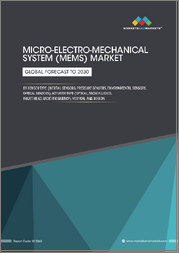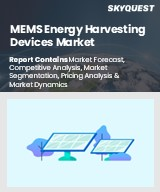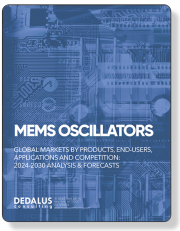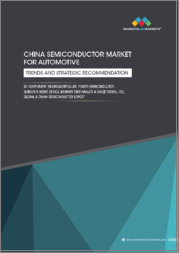
|
시장보고서
상품코드
1715450
세계의 MEMS 시장 : 디바이스 유형, 제조 기술, 최종사용자별 - 예측(2025-2030년)Micro-Electro-Mechanical System Market by Device Type, Fabrication Techniques, End User - Global Forecast 2025-2030 |
||||||
MEMS 시장은 2024년 292억 6,000만 달러, 2025년에는 315억 9,000만 달러에 이르고, CAGR 8.14%로 성장하여 2030년에는 468억 1,000만 달러에 달할 것으로 예측됩니다.
| 주요 시장 통계 | |
|---|---|
| 기준 연도 : 2024년 | 292억 6,000만 달러 |
| 추정 연도 : 2025년 | 315억 9,000만 달러 |
| 예측 연도 : 2030년 | 468억 1,000만 달러 |
| CAGR(%) | 8.14% |
MEMS시장은 소형화 혁신과 실제 응용이 만나는 매력적인 분기점에 있습니다. 이 Executive Summary는 MEMS의 현황을 종합적으로 분석하고, MEMS 기술의 급속한 발전과 다양한 산업 분야에서 MEMS가 수행하는 기본 역할을 소개합니다. 통합하여 소형화와 에너지 효율을 향상시킴으로써 전례 없는 성능 향상을 실현합니다. 이 시장은 첨단 제조 방법, 장치 설계의 개선, 스마트 데이터 분석의 도입이 결합되어 기술적 경계와 비즈니스 잠재력을 재정의하는 데 기여하고 있습니다. 이 보고서는 시장 부문, 기술 동향, 전략적 기회를 파악하여 명확한 전망을 제시합니다. 이 보고서는 시장 부문, 기술 동향, 전략적 기회를 파악하여 명확한 전망을 제시합니다. 다음 섹션에서는 혁신적인 변화, 세분화된 세분화 통찰력, 지역별 시장 역학, 주요 산업 기업에 대한 자세한 개요를 제공합니다. 이 요약은 높은 수준의 전략적 인사이트와 심층적인 기술 분석을 균형 있게 결합하여 MEMS 분야의 현재 비즈니스 기회를 더 잘 이해하고 미래 동향을 예측하고자 하는 업계 관계자들에게 권위 있는 가이드가 되고자 합니다.
마이크로 전기기계 시스템 시장의 변화
최근 MEMS 시장의 변화는 기술적 르네상스뿐만 아니라 시장 역학에 큰 변화를 가져왔습니다. 재료 과학, 디지털 통합, 혁신적인 설계 프로세스의 발전은 용도별 개선을 촉진하고 있습니다. 저전력 소비와 고감도 동작이라는 새로운 트렌드는 마이크로 액추에이터와 마이크로 센서의 능력을 재정의하고 있습니다. 전통적인 기계식 시스템에서 고도로 통합된 솔루션으로의 진화는 자동차 안전 시스템, 의료 진단, 가전제품 등의 분야에서 비용 효율성과 신뢰성을 위한 새로운 길을 열어가고 있습니다. 규제 기준의 변화와 에너지 효율에 대한 관심이 높아짐에 따라, 제조업체들은 보다 현대적인 기술을 우선시하여 기존의 제조 방식을 재검토하고 있습니다. 이러한 변화는 또한 연구 기관과 업계 리더들이 혁신을 가속화하기 위해 연구 기관과 협력하는 것을 촉진하고 있습니다. 기존 기업과 민첩한 스타트업과의 경쟁이 치열해짐에 따라 시장 기업들은 디지털 기술, 예지보전, 사물인터넷(IoT) 통합의 진보를 활용하여 시스템 성능과 고객 만족도를 향상시키고 있습니다. 요약하면, 시장은 레거시 방식에서 최첨단 방식으로 전환하고 있으며, 뛰어난 기술과 전략적 선견지명으로 정의되는 미래로 나아가는 길을 열어가고 있습니다.
전략적 시장 이해를 위한 상세한 세분화 인사이트 제공
시장 세분화에 대한 통찰력을 통해 MEMS 산업의 복잡성을 이해하는 데 필수적인 고급 분류가 밝혀졌습니다. 이 분석은 장치 유형, 제조 기술, 최종 사용자용도를 고려합니다. 예를 들어, 디바이스 유형에 따라 시장을 마이크로 액추에이터와 마이크로 센서로 나눈다. 마이크로 액추에이터는 정전식 액추에이터와 압전 액추에이터로, 마이크로 센서는 화학 센서, 관성 센서, 광학 센서, 압력 센서로 분류합니다. 또한 벌크 마이크로 머시닝, LIGA 프로세스, 표면 마이크로 머시닝 등의 접근법을 포함한 제조 기술도 종합적으로 평가했습니다. 각 방법에는 분명한 장점이 있으며, 상세한 연구에 따르면 정확도, 비용 요소 및 확장성이 이러한 기술의 채택에 매우 중요한 역할을 하는 것으로 나타났습니다. 최종 사용자 세분화는 자동차, 가전, 헬스케어, 산업용도, 통신 등 주요 산업을 조사하여 더욱 심도 있게 분석합니다. 이러한 세분화 인사이트는 기술, 생산 공정, 시장 수요의 상호 관계를 밝혀내어 MEMS 부문에서 목표 투자 및 혁신을 추구하는 이해관계자들을 위한 명확한 로드맵을 제시합니다.
목차
제1장 서문
제2장 조사 방법
제3장 주요 요약
제4장 시장 개요
제5장 시장 인사이트
- 시장 역학
- 성장 촉진요인
- 성장 억제요인
- 기회
- 해결해야 할 과제
- 시장 세분화 분석
- Porter’s Five Forces 분석
- PESTLE 분석
- 정치
- 경제
- 사회
- 기술
- 법률
- 환경
제6장 MEMS 시장 : 디바이스 유형별
- 마이크로 액추에이터
- 정전 액추에이터
- 압전 액추에이터
- 마이크로센서
- 화학 센서
- 관성 센서
- 광학 센서
- 압력 센서
제7장 MEMS 시장 : 제조 기술별
- 벌크 마이크로 머시닝
- LIGA 프로세스
- 표면 마이크로 머시닝
제8장 MEMS 시장 : 최종사용자별
- 자동차
- 가전
- 헬스케어
- 산업
- 통신
제9장 아메리카의 MEMS 시장
- 아르헨티나
- 브라질
- 캐나다
- 멕시코
- 미국
제10장 아시아태평양의 MEMS 시장
- 호주
- 중국
- 인도
- 인도네시아
- 일본
- 말레이시아
- 필리핀
- 싱가포르
- 한국
- 대만
- 태국
- 베트남
제11장 유럽, 중동 및 아프리카의 MEMS 시장
- 덴마크
- 이집트
- 핀란드
- 프랑스
- 독일
- 이스라엘
- 이탈리아
- 네덜란드
- 나이지리아
- 노르웨이
- 폴란드
- 카타르
- 러시아
- 사우디아라비아
- 남아프리카공화국
- 스페인
- 스웨덴
- 스위스
- 튀르키예
- 아랍에미리트(UAE)
- 영국
제12장 경쟁 구도
- 시장 점유율 분석, 2024
- FPNV 포지셔닝 매트릭스, 2024
- 경쟁 시나리오 분석
- 전략 분석과 제안
기업 리스트
- ACEINNA, Inc.
- Amphenol Corporation
- Analog Devices, Inc.
- Angst+Pfister Sensors & Power AG
- ASC GmbH
- DJB Instruments(UK) Ltd.
- Dytran Instruments, Inc. by Spectris PLC
- EMCORE Corporation
- Essential Research, Inc.
- FormFactor, Inc.
- Genesys Aerosystems by Moog Inc.
- Hamamatsu Photonics K.K.
- Honeywell International Inc.
- Inertial Labs, Inc.
- Infineon Technologies AG
- InfraTec GmbH
- Innosys Inc.
- KIONIX, Inc., by ROHM Co., Ltd.
- Knowles Electronics by Dover Corporation
- Merit Medical Systems, Inc.
- NXP Semiconductors N.V.
- Panasonic Corporation
- Qorvo Inc.
- Quartet Mechanics, Inc.
- Robert Bosch GmbH
- Safran S.A.
- Seiko Epson Corporation
- STMicroelectronics International N.V.
- TDK Corporation
- TE Connectivity Ltd.
- Texas Instruments Incorporated
The Micro-Electro-Mechanical System Market was valued at USD 29.26 billion in 2024 and is projected to grow to USD 31.59 billion in 2025, with a CAGR of 8.14%, reaching USD 46.81 billion by 2030.
| KEY MARKET STATISTICS | |
|---|---|
| Base Year [2024] | USD 29.26 billion |
| Estimated Year [2025] | USD 31.59 billion |
| Forecast Year [2030] | USD 46.81 billion |
| CAGR (%) | 8.14% |
The micro-electro-mechanical systems (MEMS) market is at a fascinating junction where miniaturized innovation meets real-world application. This executive summary introduces a comprehensive analysis of the MEMS landscape, highlighting the technology's rapid evolution and the fundamental role it plays in diverse industries. MEMS technology integrates sensors, actuators, and electronics on a single micro-scale platform, offering unprecedented performance enhancements with reduced size and improved energy efficiency. The market is witnessing a confluence of advanced fabrication methods, improved device designs, and the infusion of smart data analytics, all of which serve to redefine its technical boundaries and business potential. In today's competitive ecosystem, decision-makers are challenged to navigate an ever-evolving technological terrain, and this report provides a clear view by delineating market segments, technological trends, and strategic opportunities. The ensuing sections delve into transformative shifts, provide granular segmentation insights, regional market dynamics, and a detailed overview of key industry players. Through a balanced mix of high-level strategic insights and deep technical analysis, this summary aims to serve as an authoritative guide for industry stakeholders seeking to better understand current opportunities and anticipate future trends in the MEMS arena.
Transformative Shifts in Micro-Electro-Mechanical System Landscape
Recent transformative shifts in the MEMS market not only signal a technological renaissance but also underscore significant changes in market dynamics. Advances in material science, digital integration, and innovative design processes are driving application-specific improvements. Emerging trends in low-power consumption and high-sensitivity operations are redefining the capabilities of both microactuators and microsensors. The evolution from traditional mechanical systems to highly integrated solutions is creating new avenues for cost-effectiveness and reliability in sectors such as automotive safety systems, healthcare diagnostics, and consumer electronics. Changes in regulatory standards and increasing emphasis on energy efficiency have spurred manufacturers to revisit older fabrication methods in favor of more modern techniques. This shift is also catalyzing collaboration between research institutions and industry leaders to fast-track innovations. With heightened competition from both established corporations and nimble startups, market players are harnessing advancements in digital technologies, predictive maintenance, and Internet of Things (IoT) integration to enhance system performance and customer satisfaction. In summary, the market is transitioning from legacy methods towards cutting-edge practices, paving the way for a future defined by technological excellence and strategic foresight.
Detailed Segmentation Insights for Strategic Market Understanding
Insight into market segmentation reveals a sophisticated categorization vital for understanding the MEMS industry's complexities. The analysis considers device type, fabrication techniques, and end-user applications. For example, the device type segment divides the market into microactuators and microsensors. Further scrutiny of microactuators distinguishes between electrostatic actuators and piezoelectric actuators, while the microsensors segment encompasses chemical sensors, inertial sensors, optical sensors, and pressure sensors. In addition, fabrication techniques are comprehensively evaluated, including approaches such as bulk micromachining, the LIGA process, and surface micromachining. Each method offers distinct advantages-a detailed study shows that precision, cost factors, and scalability play pivotal roles in the adoption of these techniques. End user segmentation adds another layer of depth by examining focal industries such as automotive, consumer electronics, healthcare, industrial applications, and telecommunications. These segmentation insights collectively illuminate the interplay between technology, production processes, and market demands, generating a clear roadmap for stakeholders seeking targeted investments and innovations within the MEMS sector.
Based on Device Type, market is studied across Microactuators and Microsensors. The Microactuators is further studied across Electrostatic Actuators and Piezoelectric Actuators. The Microsensors is further studied across Chemical Sensors, Inertial Sensor, Optical Sensor, and Pressure Sensors.
Based on Fabrication Techniques, market is studied across Bulk Micromachining, LIGA Process, and Surface Micromachining.
Based on End User, market is studied across Automotive, Consumer Electronics, Healthcare, Industrial, and Telecommunications.
Regional Dynamics Shaping the Micro-Electro-Mechanical System Market
A regional analysis of the MEMS market demonstrates that global dynamics are intrinsically linked to localized trends. In the Americas, innovation and strong industrial bases have driven rapid market adaptation. Meanwhile, the Europe, Middle East & Africa region is leveraged by a robust regulatory framework and growing research initiatives, which influence production practices and technological uptake. The Asia-Pacific region remains a powerhouse of both manufacturing capabilities and market demand, bolstered by an expanding consumer electronics sector and dynamic industrial growth. Collectively, these regions not only contribute to the overall market volume but also underscore significant variations in technology adoption, investment intensity, and competitive strategies. This comprehensive regional perspective aids in understanding the nuanced drivers that support growth and highlight the emerging opportunities in underpenetrated areas.
Based on Region, market is studied across Americas, Asia-Pacific, and Europe, Middle East & Africa. The Americas is further studied across Argentina, Brazil, Canada, Mexico, and United States. The United States is further studied across California, Florida, Illinois, New York, Ohio, Pennsylvania, and Texas. The Asia-Pacific is further studied across Australia, China, India, Indonesia, Japan, Malaysia, Philippines, Singapore, South Korea, Taiwan, Thailand, and Vietnam. The Europe, Middle East & Africa is further studied across Denmark, Egypt, Finland, France, Germany, Israel, Italy, Netherlands, Nigeria, Norway, Poland, Qatar, Russia, Saudi Arabia, South Africa, Spain, Sweden, Switzerland, Turkey, United Arab Emirates, and United Kingdom.
Competitive Landscape Illustrated Through Leading Market Players
The competitive arena within the MEMS industry is marked by a blend of legacy players and emerging innovators. Industry leaders such as ACEINNA, Inc., Amphenol Corporation, and Analog Devices, Inc. have long established their presence by delivering reliability and high-quality standards. Companies like Angst+Pfister Sensors & Power AG, ASC GmbH, and DJB Instruments (UK) Ltd. continue to pioneer in niche areas, while Dytran Instruments, Inc. by Spectris PLC and EMCORE Corporation underscore technological adaptability and innovation. With organizations such as Essential Research, Inc. and FormFactor, Inc. providing in-depth technical support, the market further benefits from expert analysis and operational precision. Additionally, key players like Genesys Aerosystems by Moog Inc., Hamamatsu Photonics K.K., Honeywell International Inc., Inertial Labs, Inc., Infineon Technologies AG, and InfraTec GmbH contribute specialty knowledge that drives the industry forward. Innosys Inc., KIONIX, Inc. by ROHM Co., Ltd., Knowles Electronics by Dover Corporation, Merit Medical Systems, Inc., NXP Semiconductors N.V., Panasonic Corporation, Qorvo Inc., Quartet Mechanics, Inc., Robert Bosch GmbH, Safran S.A., Seiko Epson Corporation, STMicroelectronics International N.V., TDK Corporation, TE Connectivity Ltd., and Texas Instruments Incorporated complete a roster of influential market players whose strategic innovations are weaving the fabric of contemporary MEMS technology. Together, these companies offer a tapestry of technological excellence and strategic market foresight, setting benchmarks that shape industry trajectories.
The report delves into recent significant developments in the Micro-Electro-Mechanical System Market, highlighting leading vendors and their innovative profiles. These include ACEINNA, Inc., Amphenol Corporation, Analog Devices, Inc., Angst+Pfister Sensors & Power AG, ASC GmbH, DJB Instruments (UK) Ltd., Dytran Instruments, Inc. by Spectris PLC, EMCORE Corporation, Essential Research, Inc., FormFactor, Inc., Genesys Aerosystems by Moog Inc., Hamamatsu Photonics K.K., Honeywell International Inc., Inertial Labs, Inc., Infineon Technologies AG, InfraTec GmbH, Innosys Inc., KIONIX, Inc., by ROHM Co., Ltd., Knowles Electronics by Dover Corporation, Merit Medical Systems, Inc., NXP Semiconductors N.V., Panasonic Corporation, Qorvo Inc., Quartet Mechanics, Inc., Robert Bosch GmbH, Safran S.A., Seiko Epson Corporation, STMicroelectronics International N.V., TDK Corporation, TE Connectivity Ltd., and Texas Instruments Incorporated. Actionable Recommendations for Future Market Success
For industry leaders aiming to capture the potential of the MEMS market, an actionable set of recommendations emerges from a detailed review of both current trends and anticipated future shifts. Emphasis should be placed on investing in research and development, particularly in areas that support enhanced sensitivity and reliability. Collaborations across supply chains and research institutions can yield innovative solutions and expedite market access. Further, maintaining agility in adapting to regulatory changes and environmental standards will prove essential, ensuring both compliance and operational efficiency. Leaders must also consider the strategic integration of advanced digital technologies, including IoT and data analytics, to streamline manufacturing and optimize device performance. In parallel, targeted investments in diverse fabrication techniques can facilitate scalable production and cost reductions. Ultimately, adopting a proactive approach towards market diversification and risk management can solidify a company's standing in an increasingly competitive landscape. Active engagement with emerging market trends-be it through partnerships, strategic acquisitions, or in-house innovation-will be pivotal for maintaining leadership in this rapidly evolving sector.
Conclusion: Strategic Outlook and Market Potential
In conclusion, the MEMS market is positioned at a critical inflection point characterized by rapid technological advancements and evolving market dynamics. The detailed segmentation analysis, regional breakdown, and competitive landscape offer a focused perspective that underscores both the challenges and growth opportunities inherent in this field. With enhanced precision in devices, innovative fabrication techniques, and expanding application areas spanning automotive, healthcare, industrial, and consumer sectors, the market is poised for sustained expansion. The blend of transformative industry shifts and strategic recommendations provides stakeholders with the insights necessary to navigate future uncertainties effectively. As the MEMS sector continues to evolve, staying abreast of emerging trends and embracing technological progress will be essential for driving long-term success and competitive advantage.
Table of Contents
1. Preface
- 1.1. Objectives of the Study
- 1.2. Market Segmentation & Coverage
- 1.3. Years Considered for the Study
- 1.4. Currency & Pricing
- 1.5. Language
- 1.6. Stakeholders
2. Research Methodology
- 2.1. Define: Research Objective
- 2.2. Determine: Research Design
- 2.3. Prepare: Research Instrument
- 2.4. Collect: Data Source
- 2.5. Analyze: Data Interpretation
- 2.6. Formulate: Data Verification
- 2.7. Publish: Research Report
- 2.8. Repeat: Report Update
3. Executive Summary
4. Market Overview
5. Market Insights
- 5.1. Market Dynamics
- 5.1.1. Drivers
- 5.1.1.1. Rising adoption of MEMS in the automotive industry
- 5.1.1.2. Growing trend toward miniaturization and compact design in modern electronic devices
- 5.1.1.3. Supportive government incentives in the semiconductor industry
- 5.1.2. Restraints
- 5.1.2.1. High production costs and complex manufacturing methods for micro-electro-mechanical system
- 5.1.3. Opportunities
- 5.1.3.1. Surge in investment in research and development to enhance MEMS capabilities and applications
- 5.1.3.2. Expansion of MEMS technology in environmental monitoring
- 5.1.4. Challenges
- 5.1.4.1. Complexities in quality assurance and standardization across international MEMS manufacturing protocols
- 5.1.1. Drivers
- 5.2. Market Segmentation Analysis
- 5.2.1. Device Type: Increasing preference for electrostatic actuators owing to their inherent energy efficiency, swift response times, and precision, making
- 5.2.2. End User: Expanding utilization of micro electro mechanical systems in consumer electronics sector
- 5.3. Porter's Five Forces Analysis
- 5.3.1. Threat of New Entrants
- 5.3.2. Threat of Substitutes
- 5.3.3. Bargaining Power of Customers
- 5.3.4. Bargaining Power of Suppliers
- 5.3.5. Industry Rivalry
- 5.4. PESTLE Analysis
- 5.4.1. Political
- 5.4.2. Economic
- 5.4.3. Social
- 5.4.4. Technological
- 5.4.5. Legal
- 5.4.6. Environmental
6. Micro-Electro-Mechanical System Market, by Device Type
- 6.1. Introduction
- 6.2. Microactuators
- 6.2.1. Electrostatic Actuators
- 6.2.2. Piezoelectric Actuators
- 6.3. Microsensors
- 6.3.1. Chemical Sensors
- 6.3.2. Inertial Sensor
- 6.3.3. Optical Sensor
- 6.3.4. Pressure Sensors
7. Micro-Electro-Mechanical System Market, by Fabrication Techniques
- 7.1. Introduction
- 7.2. Bulk Micromachining
- 7.3. LIGA Process
- 7.4. Surface Micromachining
8. Micro-Electro-Mechanical System Market, by End User
- 8.1. Introduction
- 8.2. Automotive
- 8.3. Consumer Electronics
- 8.4. Healthcare
- 8.5. Industrial
- 8.6. Telecommunications
9. Americas Micro-Electro-Mechanical System Market
- 9.1. Introduction
- 9.2. Argentina
- 9.3. Brazil
- 9.4. Canada
- 9.5. Mexico
- 9.6. United States
10. Asia-Pacific Micro-Electro-Mechanical System Market
- 10.1. Introduction
- 10.2. Australia
- 10.3. China
- 10.4. India
- 10.5. Indonesia
- 10.6. Japan
- 10.7. Malaysia
- 10.8. Philippines
- 10.9. Singapore
- 10.10. South Korea
- 10.11. Taiwan
- 10.12. Thailand
- 10.13. Vietnam
11. Europe, Middle East & Africa Micro-Electro-Mechanical System Market
- 11.1. Introduction
- 11.2. Denmark
- 11.3. Egypt
- 11.4. Finland
- 11.5. France
- 11.6. Germany
- 11.7. Israel
- 11.8. Italy
- 11.9. Netherlands
- 11.10. Nigeria
- 11.11. Norway
- 11.12. Poland
- 11.13. Qatar
- 11.14. Russia
- 11.15. Saudi Arabia
- 11.16. South Africa
- 11.17. Spain
- 11.18. Sweden
- 11.19. Switzerland
- 11.20. Turkey
- 11.21. United Arab Emirates
- 11.22. United Kingdom
12. Competitive Landscape
- 12.1. Market Share Analysis, 2024
- 12.2. FPNV Positioning Matrix, 2024
- 12.3. Competitive Scenario Analysis
- 12.3.1. Omnitron Sensors secures USD 13 million Series A funding, fueling next generation of MEMS sensors
- 12.3.2. Strategic collaboration between ELCIA and IESA transforms India's sensor manufacturing landscape by leveraging advanced MEMS
- 12.3.3. Murata manufacturing launches SCH1633-D01 advanced 6DoF MEMS sensor
- 12.3.4. Sumitomo Precision Products Co. Enhances MEMS Manufacturing with Advanced Foundry
- 12.3.5. Melexis Introduces Novel Triphibian MEMS Pressure Sensor
- 12.3.6. Enhancing Precision Timekeeping: SITM's Endura Epoch Platform Elevates MEMS OCXO Technology
- 12.4. Strategy Analysis & Recommendation
Companies Mentioned
- 1. ACEINNA, Inc.
- 2. Amphenol Corporation
- 3. Analog Devices, Inc.
- 4. Angst+Pfister Sensors & Power AG
- 5. ASC GmbH
- 6. DJB Instruments (UK) Ltd.
- 7. Dytran Instruments, Inc. by Spectris PLC
- 8. EMCORE Corporation
- 9. Essential Research, Inc.
- 10. FormFactor, Inc.
- 11. Genesys Aerosystems by Moog Inc.
- 12. Hamamatsu Photonics K.K.
- 13. Honeywell International Inc.
- 14. Inertial Labs, Inc.
- 15. Infineon Technologies AG
- 16. InfraTec GmbH
- 17. Innosys Inc.
- 18. KIONIX, Inc., by ROHM Co., Ltd.
- 19. Knowles Electronics by Dover Corporation
- 20. Merit Medical Systems, Inc.
- 21. NXP Semiconductors N.V.
- 22. Panasonic Corporation
- 23. Qorvo Inc.
- 24. Quartet Mechanics, Inc.
- 25. Robert Bosch GmbH
- 26. Safran S.A.
- 27. Seiko Epson Corporation
- 28. STMicroelectronics International N.V.
- 29. TDK Corporation
- 30. TE Connectivity Ltd.
- 31. Texas Instruments Incorporated



















